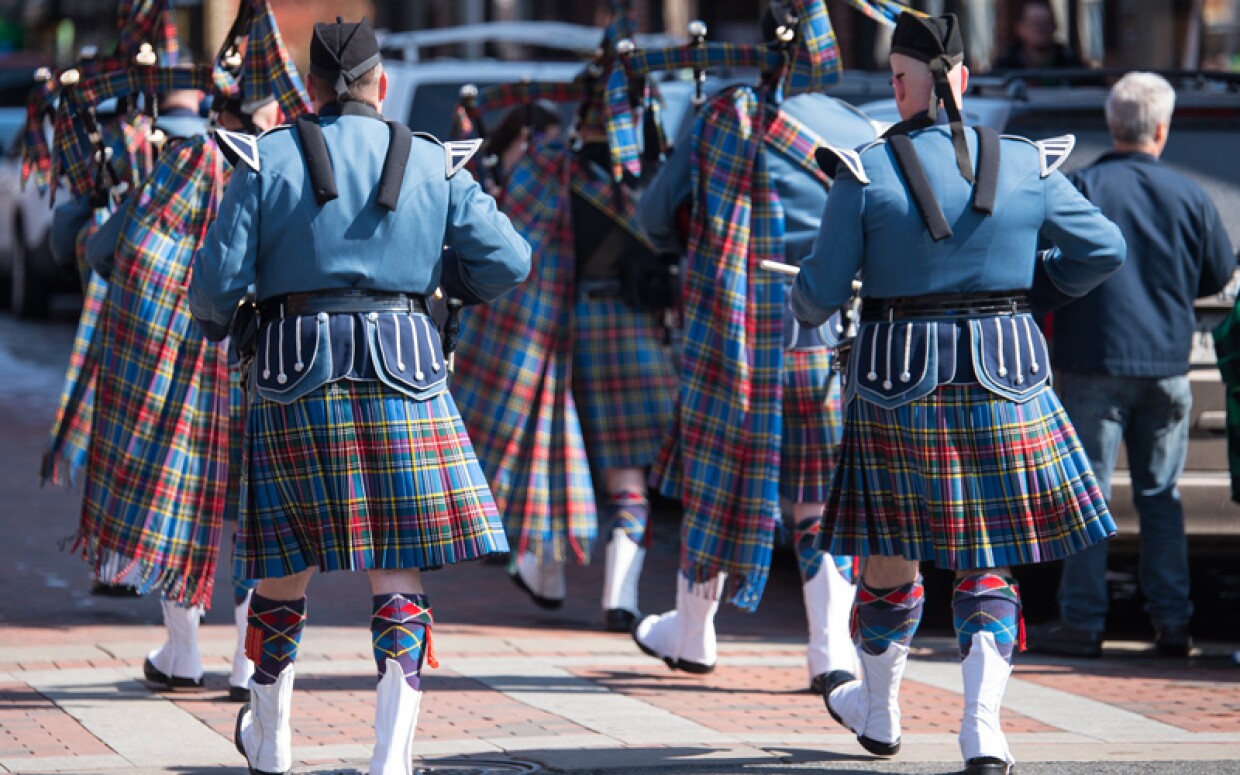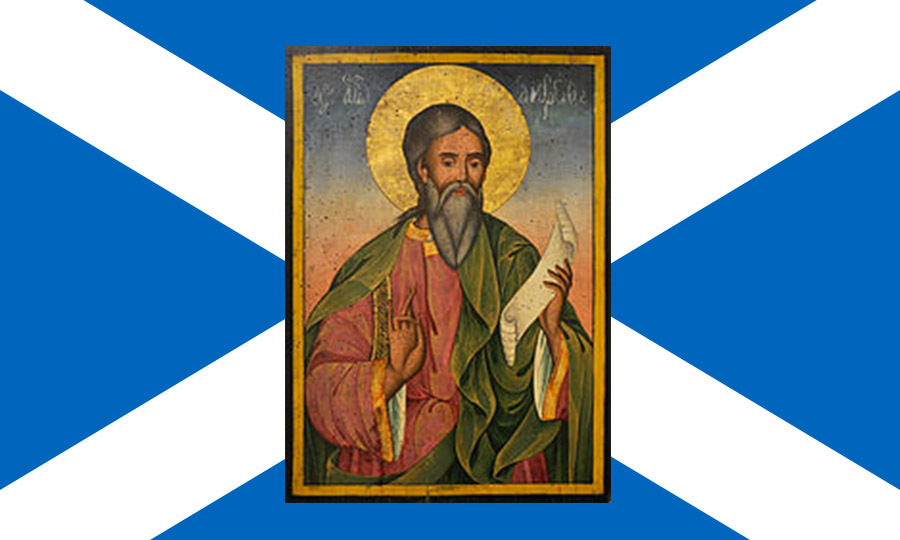Hi everyone! Today we are here to present you another entry on our blog. This is coming to the end... but we hope you enjoy this entry as much as the first! To those who did not know about this, yesterday was 30th November, a highly important day in one part of England, concretely Scotland. This is why it was celebrated St Andrew's day, the patron of the country. So, are you ready to know more about this essential day In Britain? Here we go!

Photo: https://www.familysearch.org/en/blog/st-andrews-day
The history of this day came so many years ago, Saint Andrew the younger brother of Saint Peter, embarked on voyages across the Mediterranean Sea and the Black Sea, spreading the Gospel and becoming the first bishop of Byzantium. For this reason, Saint Andrew is revered as the patron saint of the Orthodox Church, bonured not only in Scotland but also in countries such as Greece, Ukraine, Russia... According to tradition, the martyndom of Saint Andrew took place on November 30th in the year 60 in the Greek city of Patras. The Roman governor Aegeas ordered that Saint Andrew, disciple of Jesus, had to be bound to a cross, avoiding crucifixion to prolong his suffering, Saint Andrew refused to be tied to a Latin-style cross. Consequently, he was finally bound to a cross in the form of an X.
But why did Saint Andrew became the patron of Scotland? He was designated as the patron because one night in the year 832, prior to a conflict with the Angles and Saxons, the saint manifested to the Pictish King Angus II, foretelling his triumph in the impending confrontation.

On the subsequent day, warriors from both factions beheld a celestial marvel: the emergence of a white X-shaped cross in the azure sky, emblematic of Saint Andrew. The Picts and the Scots interpreted this as a divine signal, instilling them with strength, ultimately leading to their victory in the battle.
Subsequent to this pivotal conflict, the cross evolved into Scotland's emblematic symbol, serving as the inspiration for its distinctive flag, The Saltire, or commonly known as the Saint Andrew's Cross.
It wasn't until the 14th century when Saint Andrew was formally acknowledged as the patron saint of Scotland, and the town of Saint Andrews, believed to house his relics, became a revered place of pilgrimage.
How Scotish people celebrate this day? Currently, Saint Andrew's Day is observed throughout all areas of Scotland. It's a time when Scots proudly display their Scottish heritage, often adorning the flag of Scotland, incorporating the Saint Andrew's Cross on their faces.
Additionally, donning traditional Scottish attire, which includes a Kilt (a pleated skirt) paired with a tweed jacket (crafted from authentic Scottish wool), is customary.
Highlighted below are some of the key events held across Scotland to honor this occasion:
November in St Andrews
The city named after the Patron Saint hosts a multitude of culinary events throughout November. Among these is the Chefs Taster Lanch, where various chefs partake, providing tastings and samplings during the Demo and Dine weskrud. On Saint Andrew's Day staelf, six of the region's finest chefs present a delightful dinner
Saltire Festival, East Lothian
This festival is celebrated in the Scottish region and involves an array of activities, including a 10- kilometer night race, a golf tournament, workshops showcasing craftsmanship, and performances featuring traditional music.
Saint Andrew's Day in Glasgow
In Glasgow, an impressive torch-lit procession winds through the West End to honor this day. The proceeds from this event are channeled into charitable endeavors, paying homage to Saint Andrew's ethos of unity and support.
We think this holiday has a really intriguing background, especially for those interested in the Christian religion.
We hope you have learned about this importante celebration and we are waiting for you in our last entry!
Bibliography
- St Andrew Patron Saint of Scotland. (2023, 29 noviembre). Historic UK. https://www.historic-uk.com/HistoryUK/HistoryofScotland/St-Andrew-Patron-Saint-of-Scotland/
- Wikipedia contributors. (2023, 30 noviembre). Saint Andrew’s Day. Wikipedia. https://en.wikipedia.org/wiki/Saint_Andrew%27s_Day
- Who was St Andrew? What you might not know about Scotland’s Patron Saint - The Sunday Post. (2017b, noviembre 29). The Sunday Post. https://www.sundaypost.com/fp/who-was-st-andrew-what-you-might-not-have-known-about-scotlands-patron-saint
- Saltire Festival. (s. f.). The Saltire Society. https://www.saltiresociety.org.uk/the-saltire-festival